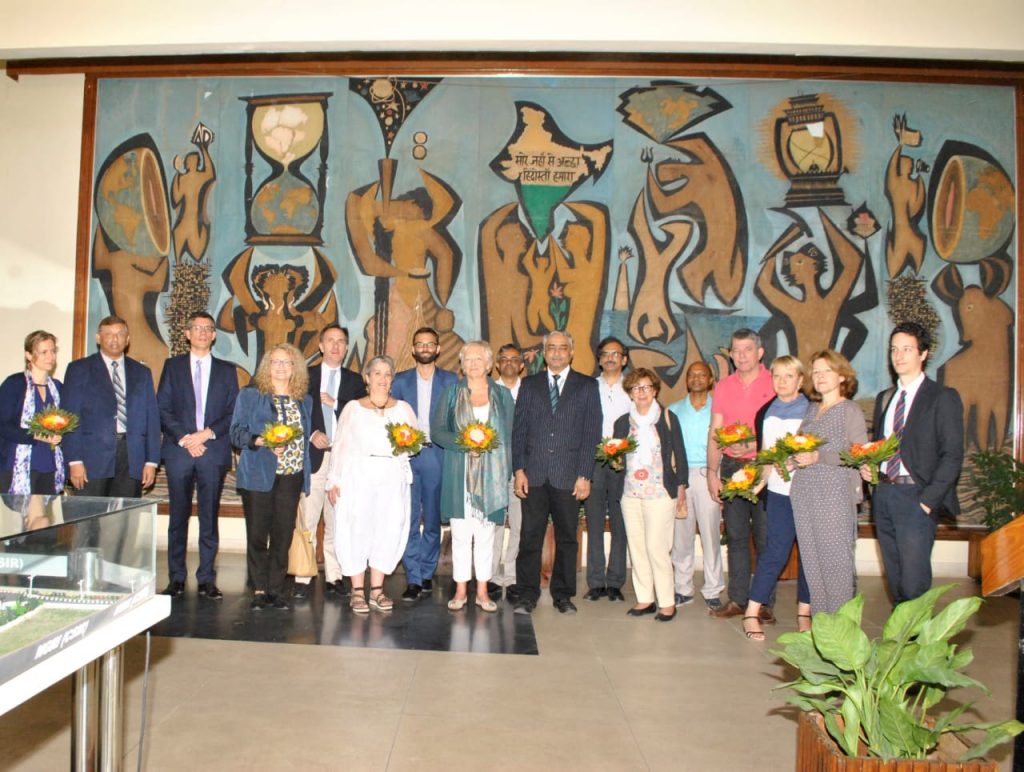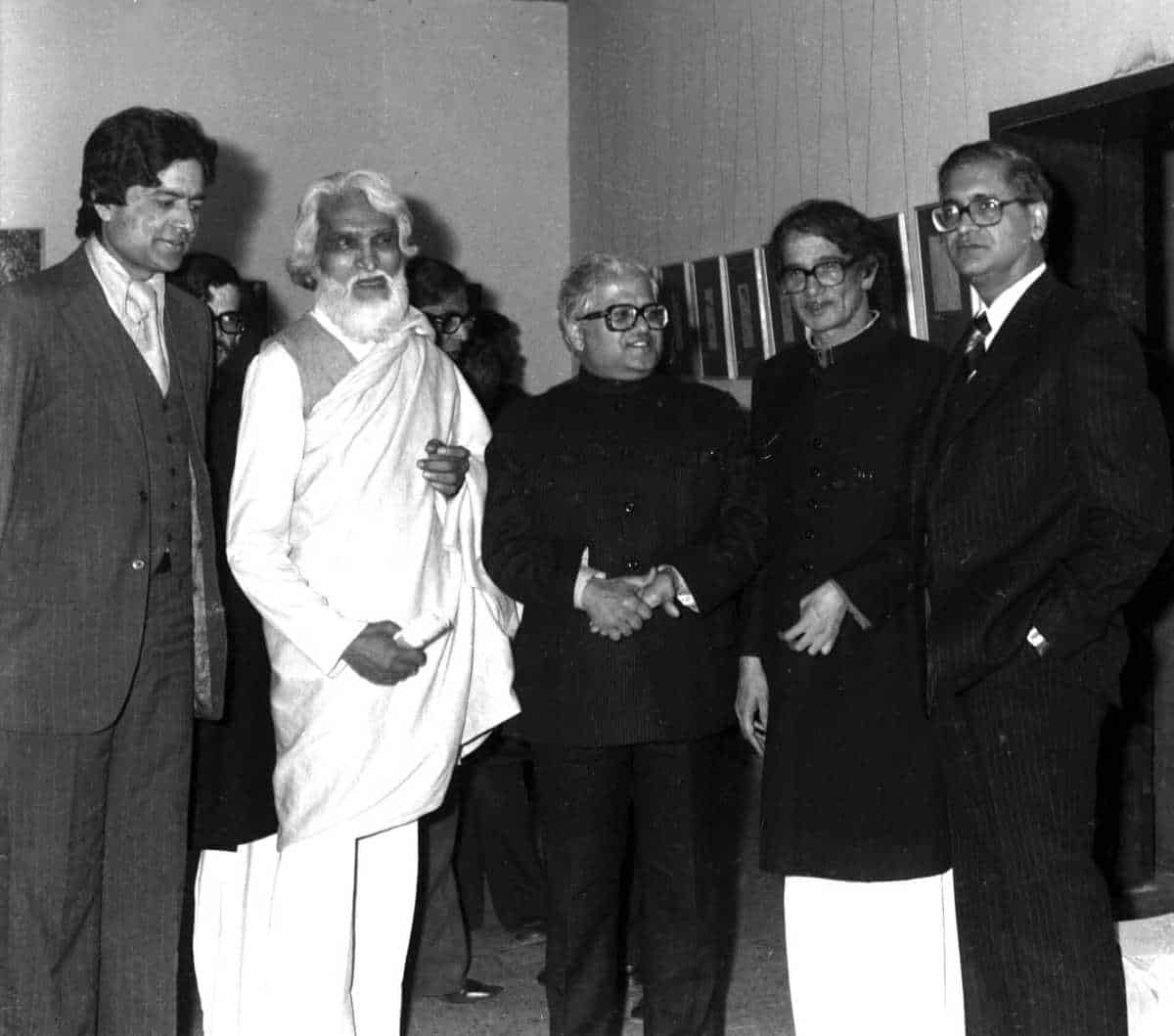S A H Rizvi
All along his life he did not create his art to make money, but used his genius to serve humanity with the eye that he saw. In this regard, there is a story that one of his domestic help asked him for some money about Rs 80,000 for the marriage of his two daughters. Sadequain did not utter a word, got up and called up one of the art lover.
He sold three of his painting for just 80,000. When the art lover told him he could have asked for bigger money for these classic works, Sadequain replied this is what my domestic help needed. Period This story was narrated by his nephew M A H Naqvi who is the Chairman of Sadequain Memorial Trust in India based in New Delhi.
During his visit to India in early eighties, I had a long meeting with the great artist at Jamia Hamdard where he was holding en exhibition on the 99 names of Allah Subhanahu. I had gone to interview him for my paper Patriot. Our meeting lasted for several hours. So many stories he narrated during his trip Sadeqain.
But one thing was clear that Sadequain had revolutionised the concept and the realms of calligraphy and transformed into an art form. Sadequain painted classical literature from the poetic verses of Ghalib, Iqbal and Faiz. He belonged to the school of thought which enriched realism with lyricism. His work was essentially linear. He also illustrated French Nobel Prize–winning writer Albert Camus, Ghalib, Iqbal, and Faiz. Thousand of the drawings he executed, were given away to his admirers. He wrote and published hundreds of quartets.

Sadequain was the most prolific painter in the period following the independence of Pakistan in 1947. He was constantly at work and he worked on large scale. He repeatedly stated that he was not interested in decorating drawing rooms of rich and powerful. He worked on large murals for public buildings, symbolic of the collective labour of humanity, and his work was mostly donated to the public.
Sadequain was an artist, a faqeer for whom humanity mattered and this he conveyed through his work. All along his life he worked and gifted so many of his gigantic worki ncluding murals without charging any money. And he was repaid back, his name still matters and matters with reverence in the field of art and what he contirbniuted to the netire mankind

Geographic boundaries did not,matter, he worked with ease in France and with same gutso worked in Abu Dhabhi but his soul always lived in India the country of his birth.
Ambassador Satinder K Lambah met Sadequain during his first posting in Pakistan at the residence of a common friend Naeem Jan. and the meeting grew as he wrote in one of his column Ambassador Lambah writes “ On one occasion he sought my help for his visit to India, where he was taking part in an exhibition. His request was three-fold: A meeting with Prime Minister Indira Gandhi, the Indian government should pay for his train fare from Delhi to Amroha, and that the PWD Guest House should be reserved for him although he would not stay there.”
Write Ambassador Lambah the air ticket for his international travel between Delhi and Islamabad would be taken care of by himself. Each request stemmed from his childhood memories. By being booked in the PWD Guesthouse, where as a child he was prevented from playing as he was told only important people lived there, he wanted to exhibit to the people of his birthplace, relatives and friends, his new standing. On return, he thanked me for fulfilling all his wishes but added he had a major regret. He had been invited for an early morning meeting by PM Indira Gandhi, but as no photographer was present at that hour, a photograph with the PM could not be taken.
Accopding to Ambassador Lambah ‘Sadequain, a frequent visitor to our house in Islamabad, made a portrait of my wife, which has since travelled with us to all our postings. I was told by an art critic that Sadequain had made very few portraits. Sadequain was, at times, referred to as the M F Hussain of Pakistan. On a visit to Karachi, when told of this, Hussain responded he would like to be called Sadequain of India. Sadequain told me this was the best compliment paid to him “
On Sadequain’s 91st birthday it would be an understatemenrt to say that Sadequain work transcend through all times (past and future) would be an understatement. Faiz Ahmed Faiz was believed to have said that Sadaquain was not only a painter but also a great thinker of the time. A lot of people who knew him felt that they could see a glimpse of Omar Khayam in him.
He created art not to merely sell it for monetary gains but rather to gift it to humanity. He has not only created paintings but hes greated gigantic monuments and has gifted us some of his extraordinary poetry as well. Those who were close to him, speak highly of his passion, dedication, compassion and talent.
It was Sadequain who introduced the exceptional art of mural making to Pakistan.
M.A Haider Naqvi his nephew, and the Founder and Chairman of Sadequain Memorial Trust of India shared a very interesting episode. He spoke of Sadequain’s visit to India in 1982. He was on a 15-day tourist visa. On the second day of his trip, he had a meeting with Indira Gandhi. They spent quite a while discussing politics (which he had no interest in), social issues (that he felt strongly about) and his art. By the end of his meeting with her, Indira Gandhi had extended his visit visa indefinitely and had asked him to stay as long as he wished. His visa was not city wise, he was given a nationwide visa which let him roam about India freely. This trip lasted a good 14 to 15 months where he had numerous exhibitions all over the country. His first exhibition was held at Lalit Kala Akademi which was co-hosted by M. F. Husain.
He went on to make many murals in India free of cost, we highlight this particular aspect of his because its an essential part of his personality. He never really cared about money. His murals, his creations for India was all a gift from him to show his love for his birth country.
Sadequain’s work revolved around him trying to show the vagaries of life. When asked what inspires him he went on to explain: “What inspires me is a person who has gone hungry for hours and is struggling for survival. The expression that lights his face at the end of the day when he has finally found some scraps, that is what touches me. I am a painter of the expression of reality.” For the

